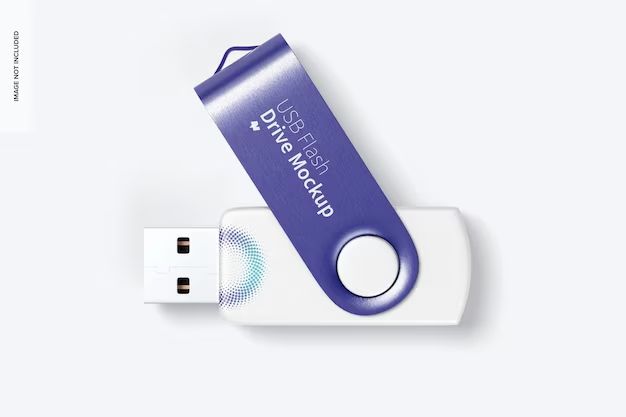USB memory sticks, also known as flash drives or thumb drives, have become a convenient way to store and transfer data. With no moving parts, USB sticks tend to be more durable than traditional storage devices like hard drives. But they are not indestructible. So how long can you expect a USB stick to last before failing?
What affects the lifespan of a USB stick?
There are several factors that can impact the usable lifetime of a USB memory stick:
- Quality of components – Cheaper USB sticks may use lower-grade NAND flash memory chips which have shorter lifespans and higher failure rates.
- Frequency of use – USB sticks that are used more often will wear out quicker than those only used occasionally.
- Handling and environment – Rough treatment, extreme temperatures, and physical damage can shorten the lifespan of a USB stick.
- Number of write/erase cycles – Flash memory has a limit on the number of times data can be written and erased before cells begin to fail.
Expected lifespan based on write/erase cycles
The NAND flash memory cells used in USB sticks can handle a limited number of write/erase cycles before they begin to fail. Typically, lower-end USB sticks may be rated for as few as 100-1000 cycles. Higher-quality models can endure 3000 or more cycles.
One write/erase cycle occurs when data is written to all memory cells in the drive, then the entire drive is erased. So a 16GB USB stick rated for 1000 cycles could have 16GB rewritten and erased 1000 times before failures may occur.
Based solely on write/erase cycles, here are some estimates for lifespan:
| Drive Capacity | Rated Cycles | Total Bytes Written |
|---|---|---|
| 16GB | 1000 | 16TB |
| 16GB | 3000 | 48TB |
| 64GB | 1000 | 64TB |
| 64GB | 3000 | 192TB |
So a higher quality 64GB USB stick rated for 3000 cycles could theoretically have 192TB of data written to it over its lifetime. That’s an enormous amount of data – most consumers will never write that much.
Expected real-world lifespan
In reality, the average USB stick will long outlive its write/erase cycle rating. Why? Because most data written to USB sticks is in small chunks rather than erasing and rewriting the entire drive each time.
Let’s say you had a 16GB USB stick rated for 1000 cycles. Each time you saved a 1GB file to it, that would count as just 1/16th of a cycle. After saving 1000 1GB files, you would still only be at around 60 full drive cycles – just 6% of the drive’s write/erase rating.
According to a study by Lexar, the average USB stick is written to less than 10 times per year. At this rate, even a lower-end USB stick rated for 1000 cycles would last for over 100 years.
Typical real-world usage lifespan
| Drive Capacity | Estimated Years |
|---|---|
| 16GB | 100+ |
| 64GB | 100+ |
Of course, factors like build quality and handling will still affect overall lifespan. But for typical light consumer usage, most USB sticks can be expected to last many years – possibly even decades.
Maximizing USB stick lifespan
To get the longest usable lifespan out of a USB memory stick:
- Avoid cheap low-quality drives. Look for ones from reputable brands.
- Handle carefully – don’t bend, drop, get wet, or expose to extreme cold/heat.
- Store in a cool, dry, normal temperature environment.
- Avoid removing flash drive before ejecting/safely removing.
- Minimize unnecessary writes. Don’t constantly rewrite files.
- Consider using higher capacity drives – this spreads writes across more memory cells.
- Replace the USB stick once performance starts to deteriorate.
Signs your USB stick is failing
Watch for these signs that indicate your USB memory stick may be nearing the end of its useful life:
- Frequent error messages or problems transferring data
- Corrupted files – data is unreadable or doesn’t match originals
- Slower performance when reading/writing files
- Drive not recognized or detected by computer
- Overheating
- Strange smells or noises
- Distorted or damaged housing/connector
Data lifetime vs. hardware lifetime
Even if the USB stick hardware seems fine, remember that data stored on flash memory still has a finite lifetime. Important files should be regularly backed up to multiple devices.
NAND flash memory slowly leaks charge over time. Data may become unreadable if not rewritten after about 10 years. However keep in mind this timescale can vary substantially based on temperature and write frequency.
Conclusion
Most USB flash drives can provide many years of service if treated well. While write/erase cycles are limited, typical everyday use will spread writes out enough to greatly extend the drive’s lifespan. With moderate use, both the hardware and data should last 5 years or more even on lower-end USB sticks.
For data that needs long-term storage beyond that, it’s recommended to back up files to fresh media every few years. And if the USB stick shows signs of issues, it’s best to retire it and transfer data to a new drive.

